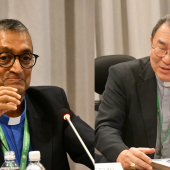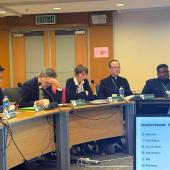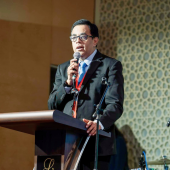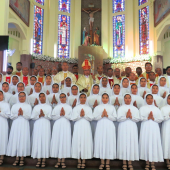Cardinal Kikuchi Takes Possession of His Titular Church in Rome, Marking a Historic Moment for Japan and the Universal Church
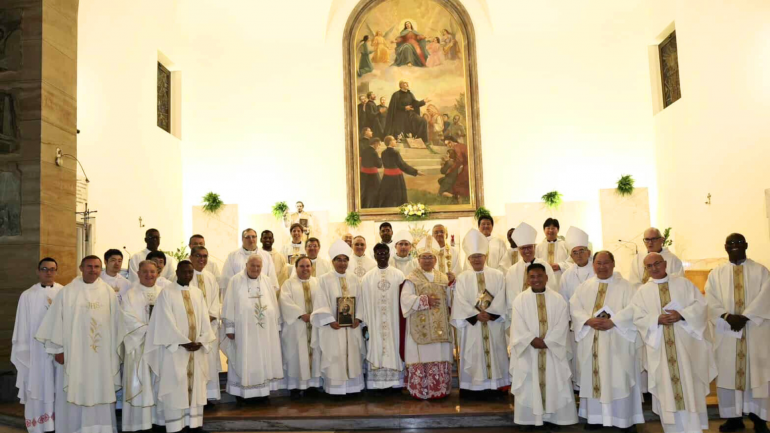
In a solemn and joyful celebration, Cardinal Tarcisio Isao Kikuchi, SVD, Archbishop of Tokyo and President of Caritas Internationalis, officially took possession of his Titular Church of San Giovanni Leonardi in Rome on Thursday, October 9, 2025.
This significant moment took place during the parish’s Patronal Festival and drew numerous faithful from Japan and the local community, highlighting the Church’s universal communion and missionary spirit.
First Titular Cardinal from Japan
Cardinal Kikuchi was created cardinal by Pope Francis in 2024, becoming the first Japanese member of the Society of the Divine Word (SVD) and the first Archbishop of Tokyo in over two decades to be elevated to the College of Cardinals. As Cardinal Presbyter of the Parish of San Giovanni Leonardi, his installation carries deep historical and ecclesial significance.
The “taking possession” ceremony is a centuries-old tradition through which new cardinals are formally assigned to a titular church in Rome. This symbolizes their participation in the pastoral care of the Diocese of Rome and their close collaboration with the Holy Father in the governance of the Universal Church.
The celebration began at 6:00 p.m. with the official welcome of the Cardinal, followed by a Eucharistic celebration at 6:30 p.m. on the Solemnity of St. Giovanni Leonardi, founder of the Clerics Regular of the Mother of God.
The parish community, joined by hundreds of pilgrims from Japan, filled the church with songs and prayers of thanksgiving.
Missionary Zeal: Witnessing the Gospel Across History
During the celebration, Cardinal Kikuchi offered a powerful reflection on Jesus’ missionary mandate, quoting Mark 16:15: “Go into all the world and proclaim the Gospel.”
He recalled how this command inspired St. Francis Xavier to sail to Japan in 1549, marking the beginning of evangelization in the country amid great hardship.
“Almost 500 years have passed since then. The Church in Japan was born with Francis Xavier; the seed was sown by missionaries and grew through the blood of martyrs. Therefore, the Church in Japan is also a Church that offers gratitude to missionaries and martyrs, our predecessors in the faith,” the Cardinal said.
He acknowledged the challenges of evangelization in Japan, where Catholics remain a small minority, especially in rural areas. Yet he emphasized that mission is ultimately God’s work:
“Evangelization in Japan is not easy. However, we are not discouraged by the reality of small numbers, because evangelization is the work of God. Since He desires the salvation of all, we believe that He will surely open the way,” he added.
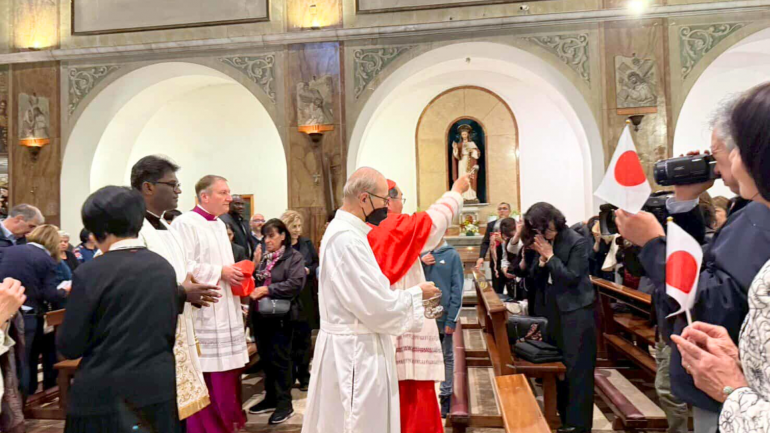
Pilgrims of Hope in a Global Church
Cardinal Kikuchi also connected this historic moment to the Holy Year 2025 theme, “Pilgrims of Hope.” He highlighted the vibrant presence of diverse communities in Japanese parishes, faithful from the Philippines, Vietnam, Indonesia, Brazil, Africa, and beyond, who now play an essential missionary role in their adopted homeland.
“All the faithful living in Japan for personal reasons are, in reality, missionaries sent by God. A Church that walks synodally is enriched through the encounter among diverse people and becomes a missionary Church,” he affirmed.
The presence of Japanese pilgrims in Rome for this occasion served as a living witness of hope and continuity of the missionary spirit that began with St. Francis Xavier.
Their participation in the Mass with the Roman parish community underscored the deep bonds between the local Church in Japan and the heart of the Catholic Church in Rome.
(Kasmir Nema, an SVD missionary based in the Vatican, contributes regularly to RVA and other Catholic platforms and magazines.)
Radio Veritas Asia (RVA), a media platform of the Catholic Church, aims to share Christ. RVA started in 1969 as a continental Catholic radio station to serve Asian countries in their respective local language, thus earning the tag “the Voice of Asian Christianity.” Responding to the emerging context, RVA embraced media platforms to connect with the global Asian audience via its 21 language websites and various social media platforms.









